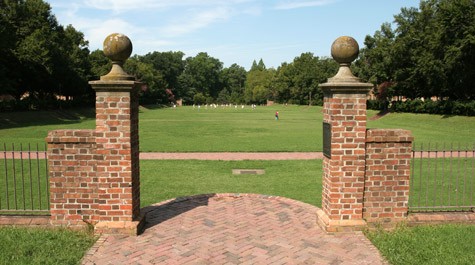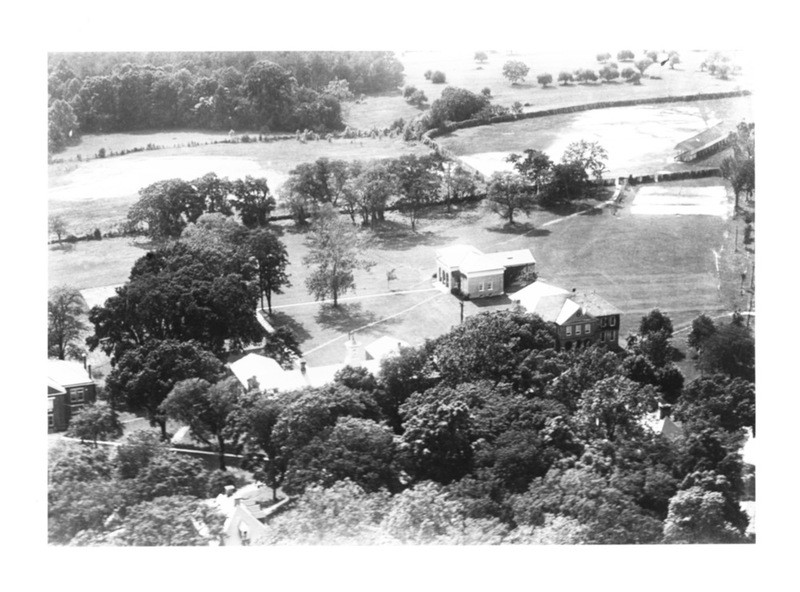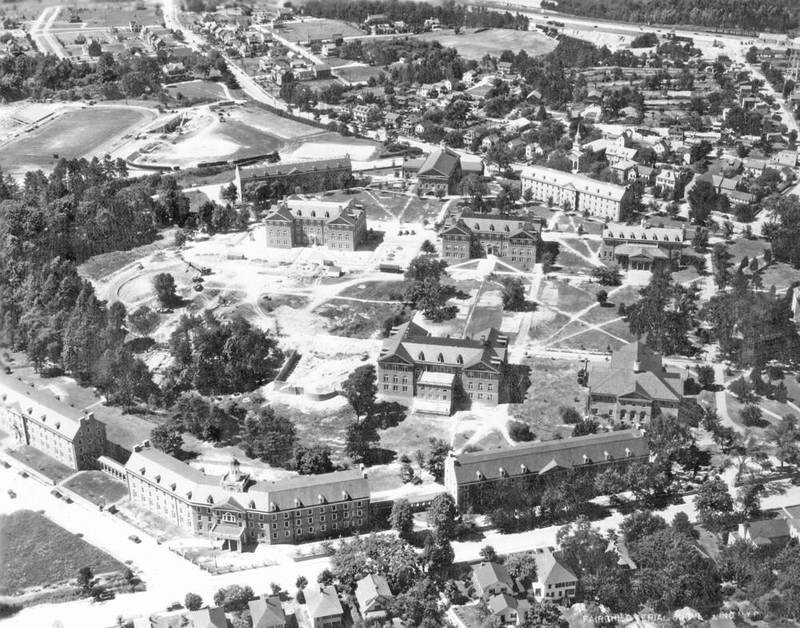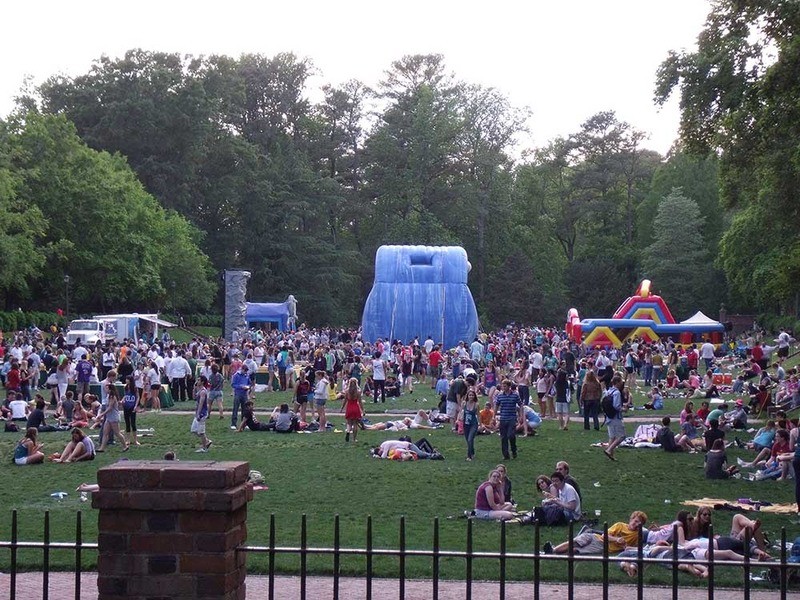Sunken Garden
Introduction
Author-Uploaded Audio
Listen to a narration of this entry's description by Victoria Endres.
Text-to-speech Audio
Images
The Sunken Garden entrance

The Old Library, before the construction of the Sunken Garden

Sunken Garden under construction, 1935

Last Day of Classes event, 2012

Backstory and Context
Author-Uploaded Audio
Listen to a narration of this entry's description by Victoria Endres.
Text-to-speech Audio
The Sunken Garden and adjacent Crim Dell Meadow were built from 1935 to 1936. The project was built by a Civilian Conservation Corps Camp that had been assigned to William & Mary in 1933. College architect Charles F. Gillette built upon the foundation work done by his predecessor, Charles M. Robinson in the 1920s. Robinson had designed the Sunken Garden by taking inspiration from Christopher Wren’s plans for the Royal Hospital Chelsea which had been completed in 1692.
The hospital was commissioned by King Charles II who instructed Wren and Sir Stephen Fox to build a facility intended to house veteran soldiers. The hospital featured a large garden designed to promote the health of residents through fresh air and exercise. Christopher Wren worked as a prominent astronomer before turning to architecture and design. He would go on to design the St. Paul’s Cathedral in London and several other projects for the royal family in addition to his work at the hospital. The Wren Building located near the Sunken Garden is named for him.
Within the Sunken Garden there are many notable plants including the some of the oldest trees on campus, the willow oak and water oak located on the south and north ends of the garden respectively. Other plants of interest include the Black gum, common boxwoods, American beeches and crape myrtles. Each are features on the self-guided plant tour designed by the university’s biology department.
The garden’s focuses more on offering large lawns and trees over intricate designs. This English style allows the grounds to be used recreationally by students. These open spaces have also allowed the garden and meadow to be used as event spaces. The Sunken Garden is now the location of the annual Last Day of Classes celebration, picnics, and dances for the campus community.
Sources
Biology Department. Sunken Garden, College of William & Mary. Accessed May 17th 2020. https://www.wm.edu/as/biology/planttour/sunkengarden/index.php.
Crim Dell & Sunken Garden, College of William & Mary. Accessed May 17th 2020. https://www.wm.edu/offices/auxiliary/conferenceservices/services/event-space/crim-dell-sunken-garden.php.
History & Heritage, Royal Hospital Chelsea . Accessed May 17th 2020. https://www.chelsea-pensioners.co.uk/historyheritage.
Special Collections Research Center. Sunken Garden, Constructed 1935-1936, College of William & Mary. Accessed May 17th 2020. https://tribetrek.wm.edu/items/show/10.
Summerson, John. Christopher Wren, Encyclopedia Britanncia. February 21st 2020. Accessed May 17th 2020. https://www.britannica.com/biography/Christopher-Wren.
https://www.wm.edu/offices/auxiliary/conferenceservices/services/event-space/crim-dell-sunken-garden.php
https://tribetrek.wm.edu/items/show/10
https://tribetrek.wm.edu/items/show/10
https://tribetrek.wm.edu/items/show/10
